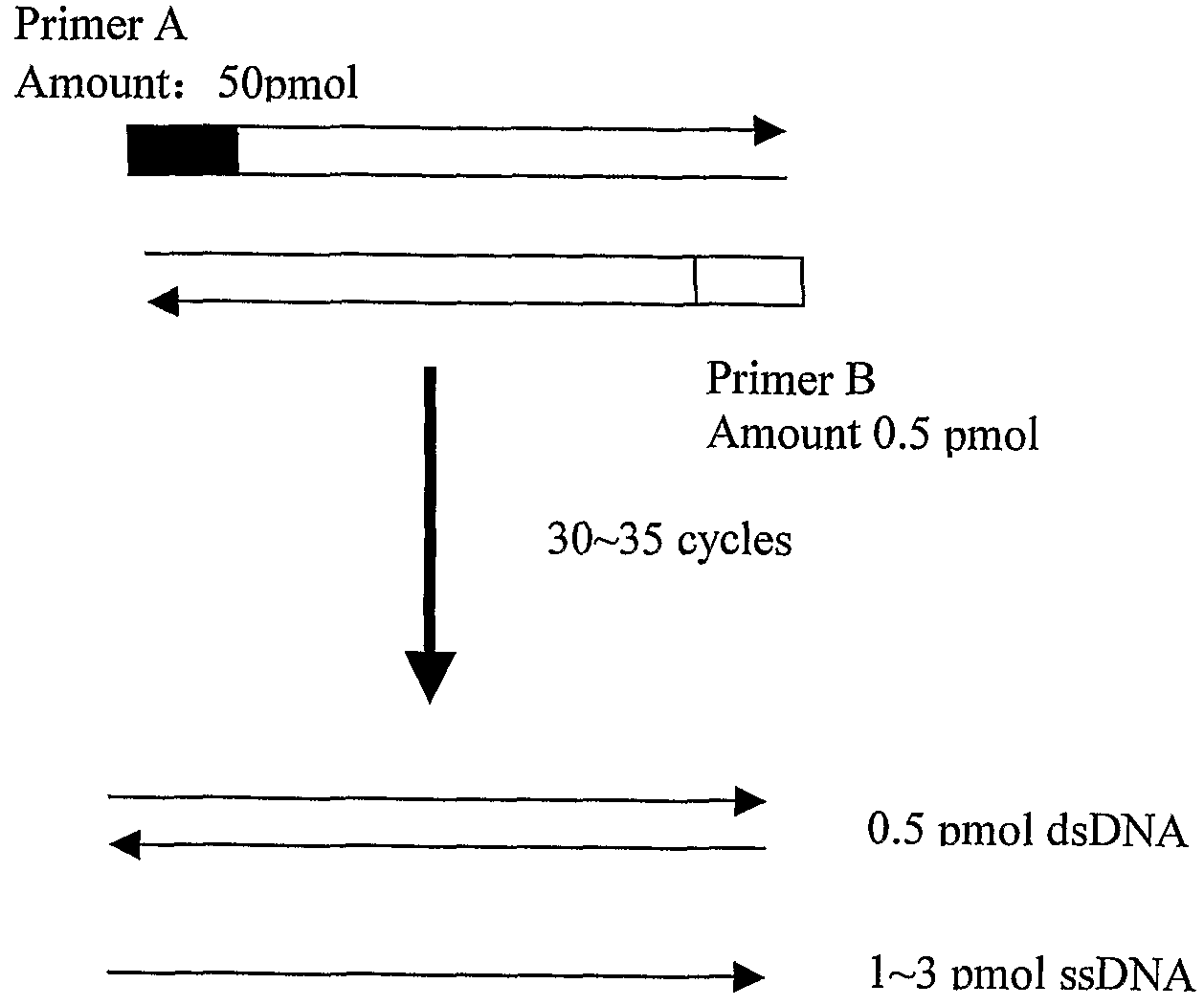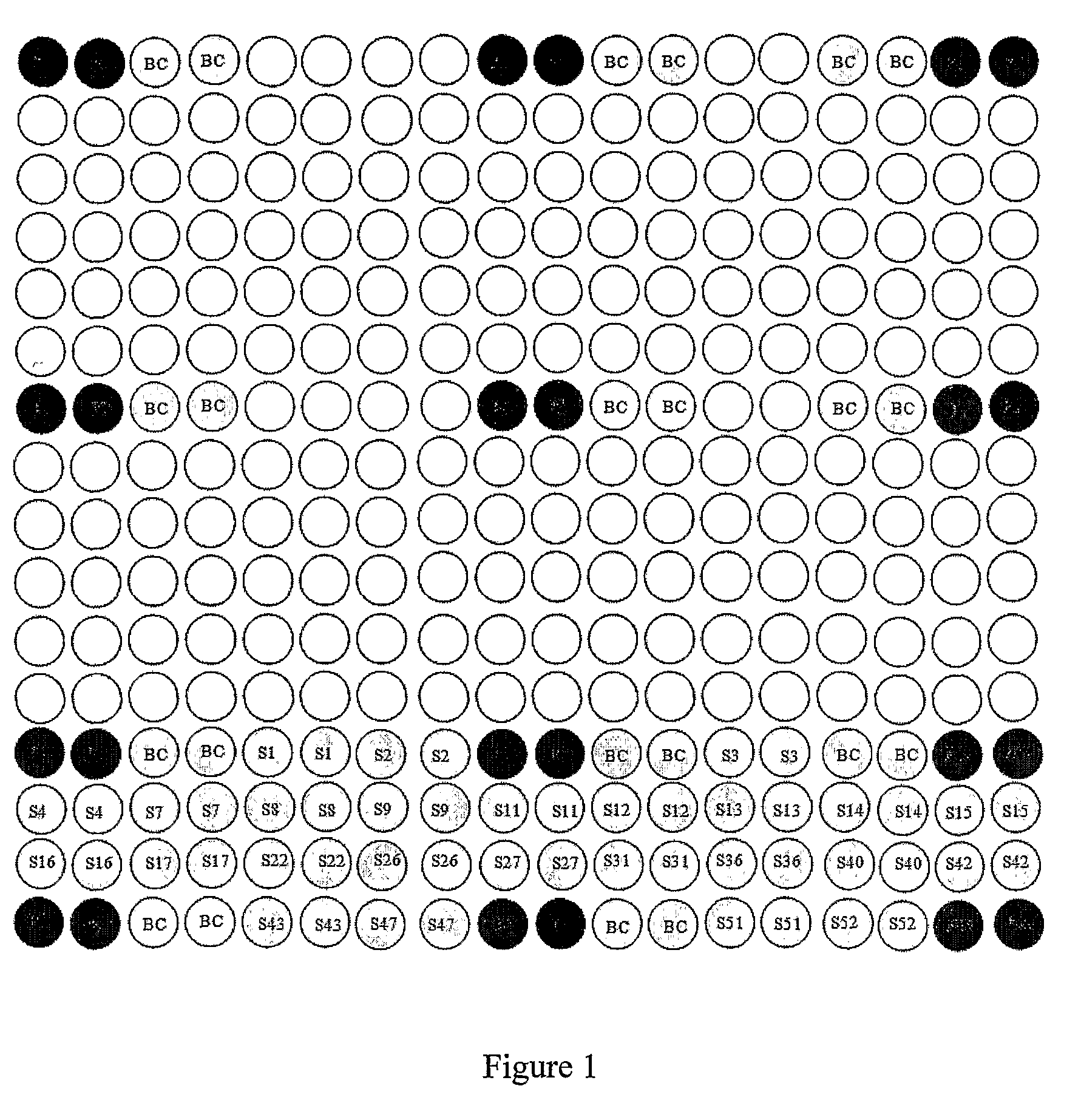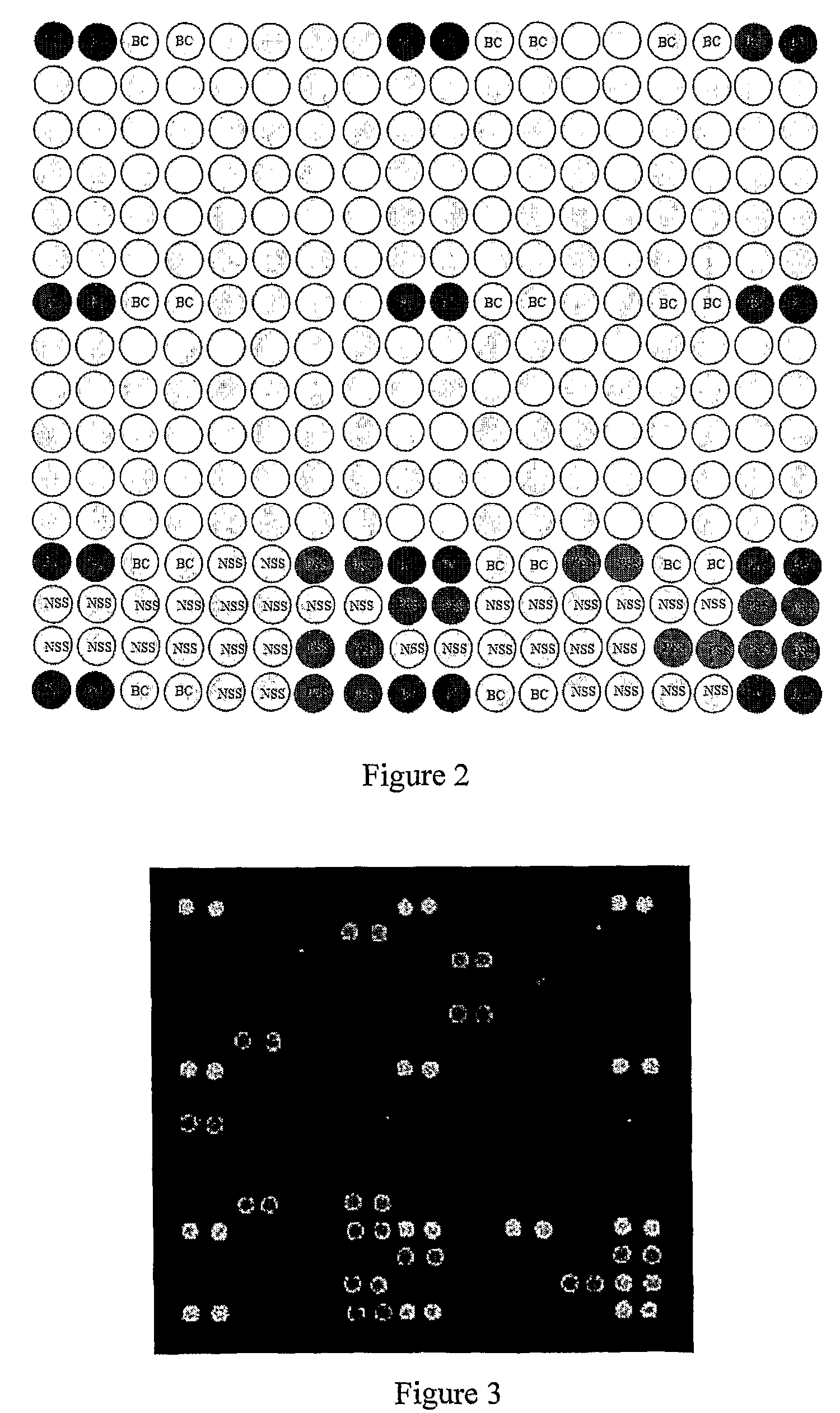Microarrays for genotyping and methods of use
a microarray and genotyping technology, applied in the field of microarrays, can solve the problems of difficult design of microarrays, difficulty in properly analysing experimental data, and limited sensitivity of obverse hybridization
- Summary
- Abstract
- Description
- Claims
- Application Information
AI Technical Summary
Benefits of technology
Problems solved by technology
Method used
Image
Examples
example
Example 1
[0054]This example demonstrates use of an exemplary microarray of the present invention to detect genotypes in multiple HLA samples.
[0055]85 unknown DNA samples were obtained from blood samples by phenol / choloroform extraction method. 52 HLA standard samples were obtained from International Histocompatibility Working Group (IHWG). These HLA standard samples are listed in FIG. 4. The locus A target gene of samples and references were amplified with the following primers: forward primer 5′—
GGCCTCCCCAGACGCCGAGGATGGC-3′, reverse primer 5′—
CGGGTCCCGTGGCCCCTGGTACCC-3′. The amplified products were then immobilized on the substrate of the microarray. The microarray also comprised quality controls (QC) for immobilization:
5′-TTTTTTTTTTTGTCTTCCACCAGGAGTCAGCAG-3′-HEX
[0056]The microarray also had positive controls (PC) for hybridization:
5′TTTTTTTTTTAAAGTTAAAGCAGACCGAAGTGGATTGCGAGTATTTGAAAAGATGTGTTGAGAAATTAACGGAAGAGAA-3′
[0057]The microarray also had blank negative controls (BC), which ...
example 2
[0060]This example shows preparation of a microarray used in the detection of HLA-DRB 1 using asymmetric PCR amplification method. The template used for the asymmetric PCR amplification was a HLA-DRB 1 standard genomic clone purchased from IHWG (International Histocompatibility Working Group, Seatle).
[0061]Sequences of probes and primers used the in experiments are listed below. They are synthesized by BioAsia Biotechnique Company (Shanghai, China).
HLA-DRB1primes (5′-3′) (Symmetric PCR):Upstream primer PMH-DFGATCCTTCGTGTCCCCACAGCACDownstream primer PMH-DRCGCTGCACTGTGAAGCTCTCACHLA-DRB1primers (5′-3′) (Asymmetric PCR):Upstream primer PMH_0303047aGATCCTTCGTGTCCCCACAGCACDownstream primer PMH_0303048dCGCTGCACTGTGAAGCTCTCACHLA-DRB1primers (5′-3′) (NP-PCR)Upstream primer PMH-HLA-DFCCGGATCCTTCGTGTCCCCACAGCACGDownstream primerPMH-HLA-DRUTCACTTGCTTCCGTTGAGGCCGCTGCACTGTGAAGCTCTUniversal primer PMH-HLA-U1TCACTTGCTTCCGTTGAGGProbes (5′-3′)Cy5-CGACAGCGACGTGGGGGA(Universal probe)TAMRA-AGAGGAGGCGGGC...
PUM
| Property | Measurement | Unit |
|---|---|---|
| Mass | aaaaa | aaaaa |
| Mass | aaaaa | aaaaa |
| Length | aaaaa | aaaaa |
Abstract
Description
Claims
Application Information
 Login to View More
Login to View More - R&D
- Intellectual Property
- Life Sciences
- Materials
- Tech Scout
- Unparalleled Data Quality
- Higher Quality Content
- 60% Fewer Hallucinations
Browse by: Latest US Patents, China's latest patents, Technical Efficacy Thesaurus, Application Domain, Technology Topic, Popular Technical Reports.
© 2025 PatSnap. All rights reserved.Legal|Privacy policy|Modern Slavery Act Transparency Statement|Sitemap|About US| Contact US: help@patsnap.com



